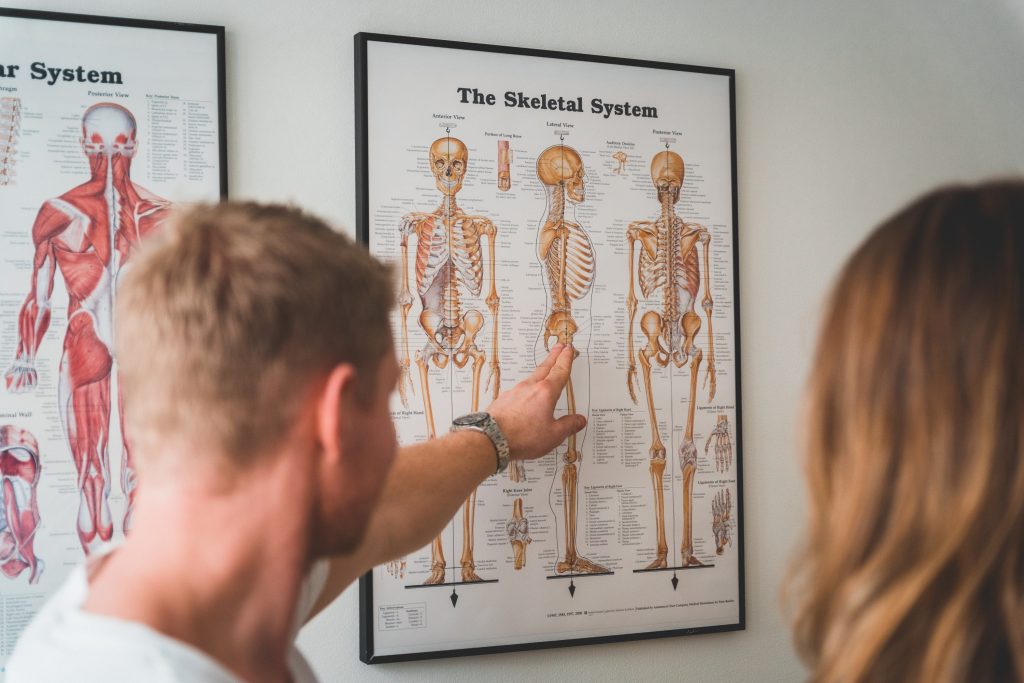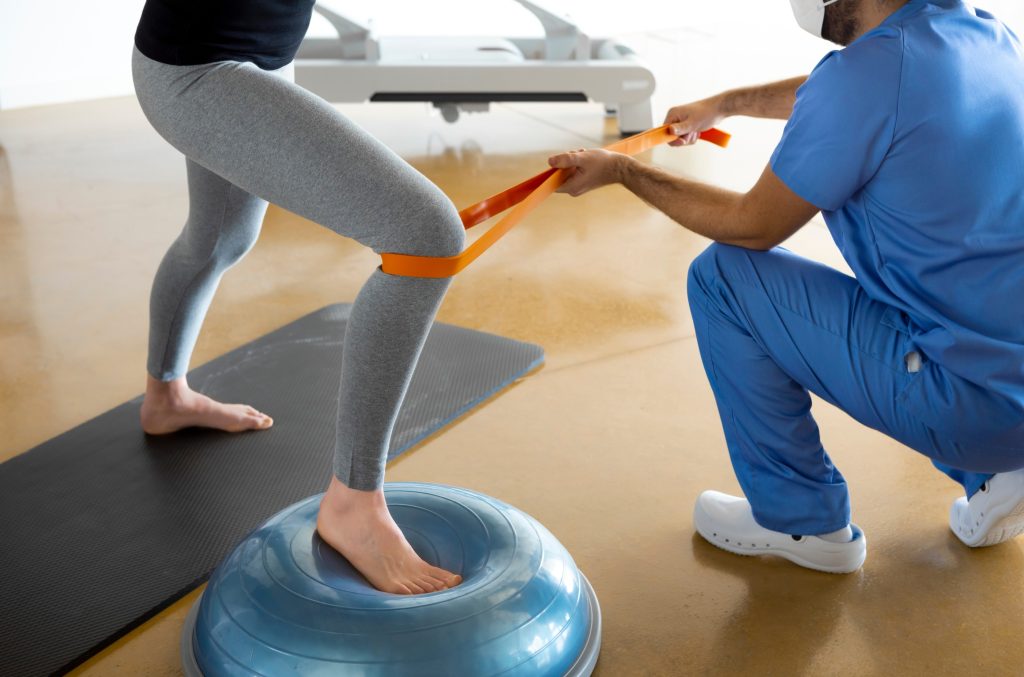Are you considering a career in physical therapy? If so, it’s important to understand the key differences between the two primary roles in this field: physical therapists (PT) and physical therapist assistants (PTA).
Upon walking into a physical therapy office, you may notice that these professions work together in seemingly similar roles. Both career paths offer rewarding growth opportunities; however, some key distinctions exist between them. To help make an informed decision about your future career path, let’s explore the differences between PTs and PTAs.
Overview of the Two Roles in Physical Therapy

Physical therapists are healthcare professionals who diagnose and treat patients with physical disabilities, impairments, or other conditions that limit their ability to move and function in their daily lives. They work closely with the patient to develop a treatment plan that includes exercises, stretches, manual therapy techniques, and other interventions. PTs also evaluate the effectiveness of treatments and educate patients on how to maintain their mobility and independence through home exercise programs.
On the other hand, physical therapist assistants (PTAs) are healthcare professionals who assist physical therapists in assessing, diagnosing, and treating patients. Under the direction of a physical therapist, a physical therapist assistant can observe patient movements to identify areas of weakness or dysfunction; they then help develop customized treatment plans based on the individual’s needs. PTAs may also provide hands-on care and help the patient learn and practice exercises for rehabilitation.
Responsibilities, Duties, and Daily Tasks

PTs and PTAs play a vital role in helping individuals regain movement after injury or illness. Together, both roles can help individuals decrease pain and improve their strength, endurance, coordination, balance, flexibility, joint range of motion, and overall quality of life.
While physical therapists focus more on creating individualized treatment plans catered to each person’s specific needs, physical therapy assistants concentrate more on carrying out these treatment plans by helping create specific goals for their patients while monitoring their progress.
Here are some more differences between the job responsibilities of physical therapists and physical therapist assistants
Physical Therapist Job Duties
Physical therapists are responsible for planning, organizing, and providing physical therapy services to people with various conditions. They assess patients’ needs, develop treatment plans that include exercise regimens, manual techniques, and other modalities to improve patients’ physical abilities.
PTs also conduct evaluations to determine how well the patient is progressing with their treatments, modify their plans as needed, re-evaluate progress at regular intervals, provide guidance on home exercises and activities, educate patients on proper technique during exercises or activities at home or in clinical settings, develop rehabilitation programs tailored to meet individual needs or goals of the patient, work collaboratively with other health care professionals on interdisciplinary teams when necessary.
Physical Therapist Assistant Job Duties
Physical therapist assistants work alongside physical therapists to provide direct patient care according to their care plan. They evaluate patients’ range of motion and muscle strength, apply therapeutic techniques such as hot/cold packs, instruct patients in using assistive devices like crutches or braces, and train patients in proper exercise techniques.
Additionally, physical therapist assistants document changes in the patient’s condition, provide emotional support and encouragement, perform administrative tasks, and observe the patient’s performance outcomes.
In order to be their best at assisting patients, PTAs must understand anatomy, physiology, kinesiology, and basic medical terminology concerning PT treatments.
Educational Requirements and Qualifications for Physical Therapists (PTs)

The first step for anyone wanting to pursue a career as a PT is to complete an accredited physical therapist education program. These programs may include a Doctor of Physical Therapy (DPT) degree or a Master’s degree in Physical Therapy (MPT).
A DPT is the most common educational requirement for PTs and typically takes three years to complete. During this time, students will learn about the science of physical rehabilitation and develop their clinical skills through supervised clinical experiences.
In addition to completing an accredited program, aspiring PTs must pass the National Physical Therapy Examination (NPTE), administered by the Federation of State Boards of Physical Therapy (FSBPT).
This examination tests general knowledge in physical therapy practice and includes topics such as patient/client management, physiology and anatomy, therapeutic interventions, and more. Those who pass this exam become eligible for licensure and can practice within their state.
Continuing education credits are also required for all practicing physical therapists to maintain licensure. This can include seminars and workshops on new techniques or treatments offered by professional organizations such as the American Physical Therapy Association (APTA), or courses from accredited universities or college continuing education programs. Many states require additional credits on specific topics like ethics or record keeping.
Educational Requirements and Qualifications for Physical Therapy Assistants (PTAs)

The most common educational requirement for aspiring PTAs is an Associate’s degree in Physical Therapy Assistance from an accredited college or university. This degree typically requires two years of full-time study and includes classroom instruction and clinical practice experiences.
PTAs also have the option to pursue a Bachelor’s degree in Physical Therapy Assistance, which can help physical therapist assistants progress within the field. A Bachelor’s degree will cost more and take longer (about four years) to complete than an Associate’s degree, but it could pay off in the future.
During their PTA program, students will learn about anatomy, physiology, kinesiology, patient/client assessment, therapeutic interventions, and other related topics. Most states also require PTAs to pass the National Physical Therapy Examination for Physical Therapist Assistants (NPTE-PTA) administered by the FSBPT before being eligible for licensure.
In addition to completing educational coursework and passing the NPTE-PTA exam, it is important for a physical therapy assistant to stay up-to-date on the latest developments in physical therapy practice through continuing education credits. These credits can come from professional organizations such as APTA, accredited universities, or college continuing education programs. Depending on their state regulations, PTAs may also be required to take additional courses related to patient ethics or record keeping.
One final requirement that all PTAs must meet is certification by completing a competency exam offered by APTA or another physical therapy organization approved by the state’s board of physical therapy regulations. This exam evaluates a physical therapist assistant’s understanding of physical therapy concepts and procedures for patient care.
Physical Therapist Job Outlook

Physical Therapists (PTs) are in high demand and have an excellent job outlook. According to the US Bureau of Labor Statistics, employment for physical therapists is projected to grow 17% from 2021-2031, much faster than the average for all occupations. This growth is due to the increasing prevalence of chronic conditions, such as arthritis and obesity, that require physical therapy services. With an aging population, PTs will also be needed to treat age-related injuries and illnesses.
In 2021, the median salary for physical therapists was $95,620 per year, according to the BLS. Salaries often vary by region and employer type but can range from $75K-$120K depending on experience level. The highest-paid physical therapists usually work in hospitals and specialized healthcare facilities, while lower-paid PTs work in-home care providers or outpatient clinics.
In addition to a great job outlook and competitive salaries, many physical therapists enjoy a variety of rewards that come with the profession, such as flexible schedules, autonomy, and job satisfaction. PTs may also find themselves working in various settings including hospitals, rehabilitation centers, private practices, schools, and universities.
Overall, Physical Therapists have an excellent job outlook with competitive salaries and rewarding career opportunities that make this profession both personally fulfilling and financially lucrative.
Physical Therapy Assistant Job Outlook

With an aging population and an increasing prevalence of chronic conditions such as diabetes, arthritis, and heart disease, there is a growing demand for PTAs in the United States. As such, job outlook for PTAs is very positive.
According to the Bureau of Labor Statistics, the employment rate of PTAs is expected to grow 24% from 2021 to 2031 – much faster than the average occupation. This increase in demand can be attributed to the aging population and an increase in musculoskeletal disorders due to sedentary lifestyles caused by technology use.
Additionally, research has suggested that physical therapy can help prevent surgery in certain cases and reduce medical costs associated with certain conditions. This will likely lead to higher numbers of individuals seeking physical therapy services requiring PTA assistance.
PTAs make an average annual salary of $61,180 in 2021, according to BLS data. Salaries vary greatly by region depending on the cost of living and other factors. Generally speaking, those who work in hospitals tend to have higher salaries than those who work in non-hospital settings like private practice or nursing homes.
The job outlook for physical therapy assistants looks very bright, with plenty of opportunities available now and into the future due to demographic trends and increased acceptance of alternative treatments such as physical therapy for many common ailments. Those looking for a stable career option where they can help people improve their quality of life should consider becoming a PTA.
PT vs. PTA: Which is Better?

So which is better, physical therapists or physical therapy assistants?
Ultimately, it depends on the individual and their goals. The biggest difference is that physical therapists have a higher earning potential but require more education and training to become certified. On the other hand, physical therapy assistants can start working relatively quickly with an associate degree in physical therapy assisting, making them ideal for those who want to jump into the field sooner rather than later.
PTs and PTAs play a critical role in helping improve people’s lives every day. No matter which route you choose, both are excellent career options.
Travel Physical Therapists and Physical Therapist Assistants

Travel physical therapists and physical therapist assistants have the unique opportunity to experience life as an allied health professional on the go. With travel PT and PTA jobs, you work in different settings, meet new people, and explore new places while still earning a competitive salary.
Whether you’re looking for short-term contracts or long-term assignments, traveling physical therapists and therapist assistants can find the right job to fit their lifestyle. AlliedTravelCareers.com lets you search for travel physical therapy jobs and travel PTA jobs to have access to some of the best travel positions in the country!
